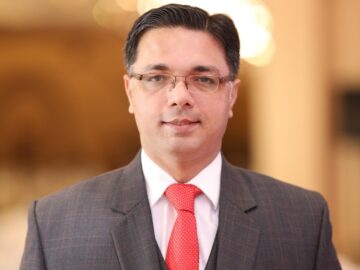
Mohsin Ahmed, CEO at Pakistan Microfinance Network (PMN), shares strategies to overcome low financial inclusion in Pakistan and how they are supporting members to promote innovation and entrepreneurship.
Ahmed while discussing the affects to recent pandemic on Pakistani economy says, “The bigger challenge on the macro front is to interact with the global economy as countries where we export or do business are still affected by COVID-19.”
He further states that, “Unless there is a second wave of COVID-19 (Inshallah not) we should expect recovery to be much better than the pre-crisis period, provided we move from a demand contracting to growth oriented policy framework.”
Investment in managing disasters should focus on managing water resources, food security and reforestation should be imperative. He says, “The big opportunity is using technology, how best we at national and at institutional level adapt to using technologies which will bring efficiency and enormous benefits in reaching the last miles.”
PMN doesn’t directly work with businesses however microfinance is all about providing financial access to micro individuals and entrepreneurs. Their role is to work with the members and ensure that the ecosystem promotes innovation and entrepreneurship.
Ahmed says, “To drive growth and efficiency, institutions will require on-boarding with agnostic and interoperable platforms. Similarly collaborations between banks and fintechs will create catalytic affect towards financial inclusion.”
He further adds, “Adopting new technologies such as Artificial Intelligence (AI) would allow designing customer centric products which would certainly increase the outreach to a wider customer base, thus helping in achieving financial inclusion goals. Blockchain would help in building secure platforms which would improve the trust level of the customers. Meanwhile adopting Open API platform would open a whole new set of possibilities and thus improving the service menu for end customers.”
In addressing the low financial inclusion in Pakistan, Ahmed highlighted 3 main steps to overcome and enhance banks offerings.
He says, “First we need to focus on digitizing the entire ecosystem, investments in shared and interoperable platforms as already indicated above. SBP and DFID have made an intelligent decision of providing such a platform for microfinance sector through Karandaz Pakistan.”
“Second institutions should offer innovative products, not just the credit but large-scale availability of saving and insurance products, meeting the demand of both micro and small enterprises in addition to micro individuals. Similarly, investments in new asset class such as low cost housing, low cost private schools and renewable energy.”
Finally outlining the last step, he says, “Financial literacy is of paramount importance, meeting the demand side limitations and engaging customers in terms of access, information and understanding of their rights and responsibilities.”
Ahmed further says that, “The best strategy to for Micro, Small and Medium-sized enterprises is to provide proper legal framework and an ecosystem where availability of institutions and instruments for small enterprises is as important a task as it was in building a microfinance sector back in 2001. Microfinance has a mission to reach and provide services to un-banked or under served, hence it will be able to serve small enterprises going forward.”
Ahmed points out that, “The real success is when microfinance outreach is available to a large population in the country that is un or under served, that the menu of financial services in not just credit , but availability of saving and insurance services and that too digitally.”
He further says, “Availability of risk capital and having a governance structure that allows innovation is the key to success, for this I need to commend Department of International Development (UKaid) and State Bank of Pakistan (SBP) in managing their FIP initiative. In addition, the role played by PPAF has been instrumental with funding support from multilateral. To add to this our members, both MFBs and MFIs, have worked hard to build a pipeline of resilient institutions that serve 7M active borrowers, 40M deposit accounts and provide insurance coverage to more than 8M low income marginalized Pakistani poors.”
Outlining his future outlook for the industry Ahmed finally states that, “We need an industry that has developed a strong history of credit profile for the clients so that they can easily access loans at a price co-related with their positive credit history. A sector which is fully regulated and has strong deposit and non-deposit taking entities and is entering new market segments. This all with a penetration rate that is close to covering 50% of the potential market.”










